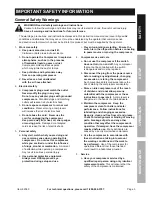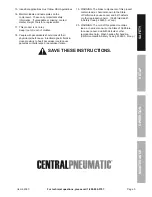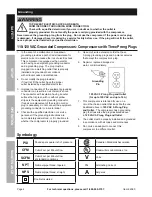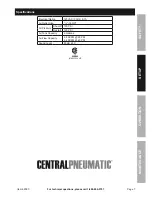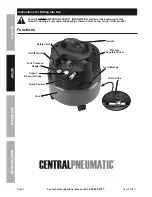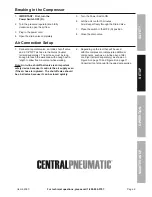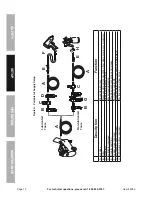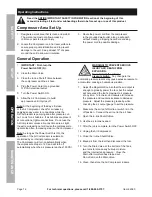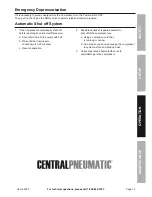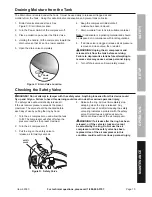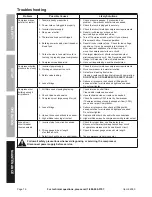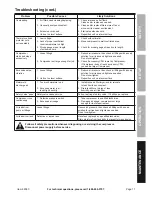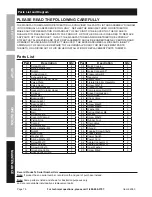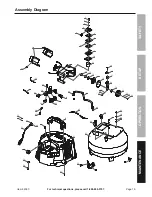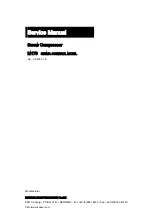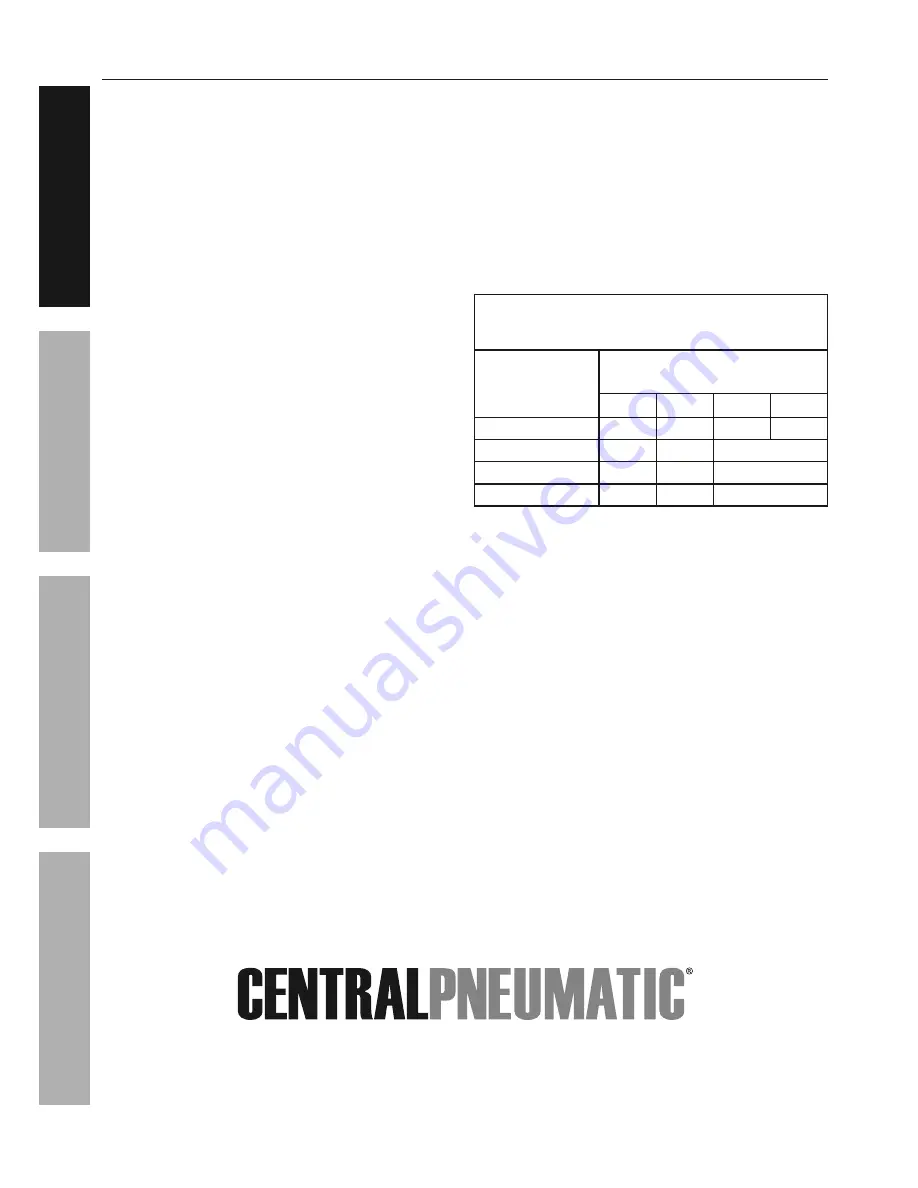
Page 4
For technical questions, please call 1-888-866-5797.
Item 62380
Sa
Fety
Opera
ti
O
n
Maintenance
Setup
air compressor Safety Warnings
1�
risk of fire or explosion - do not spray
flammable liquid in a confined area or towards a
hot surface. Spray area must be well-ventilated.
Do not smoke while spraying or spray where
spark or flame is present. arcing parts - keep
compressor at least 20 feet away from explosive
vapors, such as when spraying with a spray gun.
2�
risk of bursting - do not adjust regulator higher
than marked maximum pressure of attachment.
Do not use at pressure greater than 150 PSI�
3�
risk of injury - do not direct air
stream at people or animals.
4�
Do not use to supply breathing air.
5�
Do not leave compressor unattended
for an extended period while plugged in.
unplug compressor after working.
6�
Keep compressor well-ventilated.
Do not cover compressor during use.
7� Drain Tank daily and after use� Internal rust causes
tank failure and explosion�
8� Do not remove the valve cover or
adjust internal components�
9� Compressor head gets hot during operation�
Do not touch it or allow children nearby
during or immediately following operation�
10� Do not use the air hose to move the compressor�
11� Release the pressure in the
storage tank before moving�
12� The use of accessories or attachments not
recommended by the manufacturer may
result in a risk of injury to persons�
13� All air line components, including hoses, pipe,
connectors, filters, etc�, must be rated for a minimum
working pressure of 200 PSI, or 150% of the
maximum system pressure, whichever is greater�
14� USE OF AN EXTENSION CORD IS NOT
RECOMMENDED� If you choose to use an
extension cord, use the following guidelines:
taBLe a: recOMMenDeD MiniMuM Wire
GauGe FOr eXtenSiOn cOrDS
(120 VOLt)
naMepLate
aMpereS
(at full load)
eXtenSiOn cOrD
LenGtH
25′
50′
100′
150′
0 – 6
18
16
16
14
6�1 – 10
18
16
Do not use.
10�1 – 12
16
16
Do not use.
12�1 – 16
14
12
Do not use.
a� Make sure your extension cord
is in good condition�
b� Be sure to use an extension cord which
is heavy enough to carry the current your
product will draw� An undersized cord will
cause a drop in line voltage resulting in loss
of power and overheating� Table A shows the
correct size to use depending on cord length
and nameplate ampere rating� If in doubt,
use the next heavier gauge� The smaller
the gauge number, the heavier the cord�



